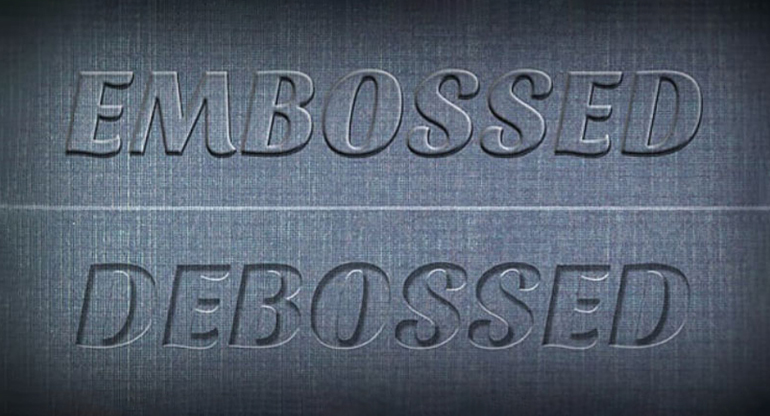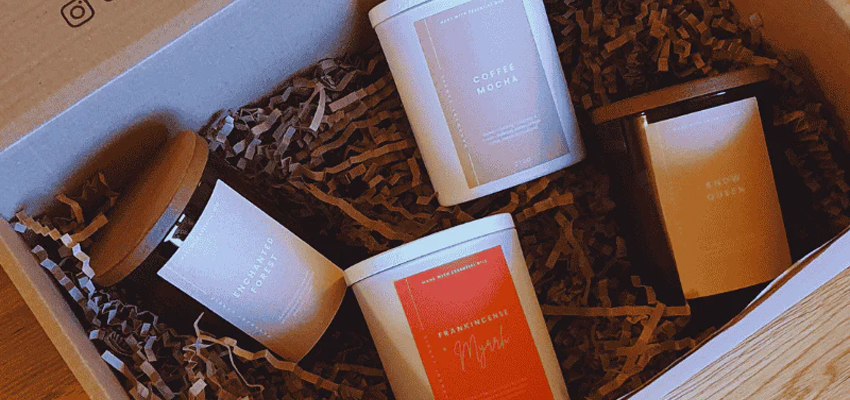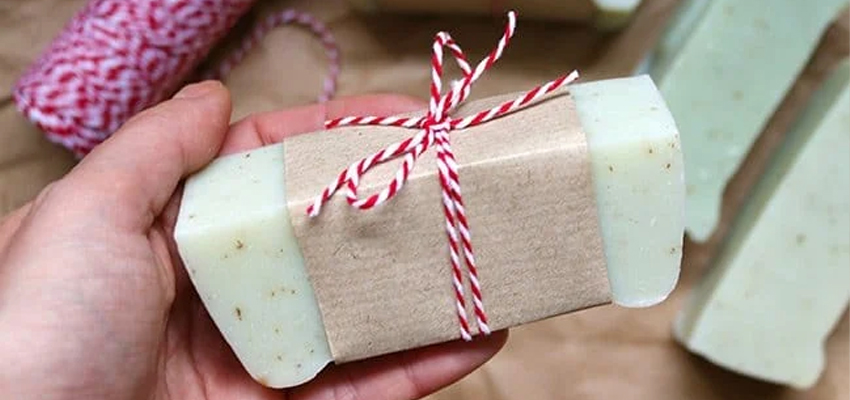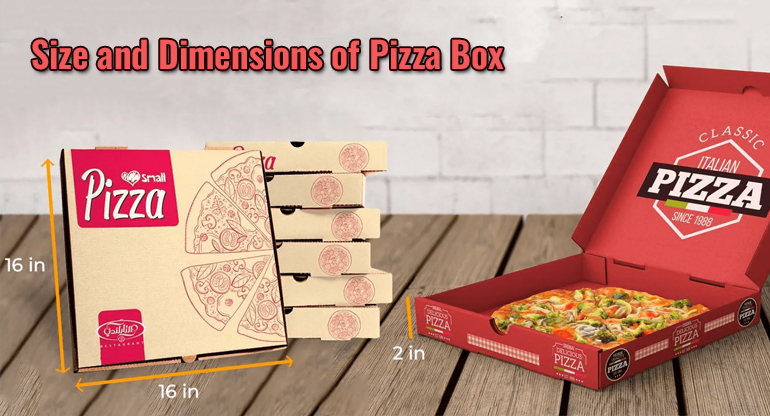In the packaging industry, presentation is everything. Elements like embossing and debossing play a significant role in elevating a brand’s packaging.They add texture and depth to the packaging that draw attention and give products a high-end feel.This article explores embossing and debossing in packaging, how they’re achieved, and how they impact a brand's image.
What Is Embossing?
Embossing is a technique that creates a raised design on paper boxes or other materials. It involves pressing a stamp into the surface, which lifts certain areas, creating a three-dimensional effect.
This textured finish is often applied to logos, brand names, or decorative elements to make them stand out visually and tactilely.
Using embossed packaging is an excellent way to add sophistication to your product. Customers tend to associate textured packaging with luxury, which can enhance the perceived value of the product.
What Is Debossing?
While embossing raises certain areas, debossing is the opposite. This technique involves pressing designs or text into the surface, creating a recessed effect. Unlike embossing, debossing offers a subtle look, often favored for minimalist designs.
Debossing works well for brand logos and small details on packaging where you want to create visual depth without drawing too much attention.
It’s a great way to give your product an elegant look, making it popular in artisanal packaging.
Embossing VS. Debossing: Which One Is Right For You?
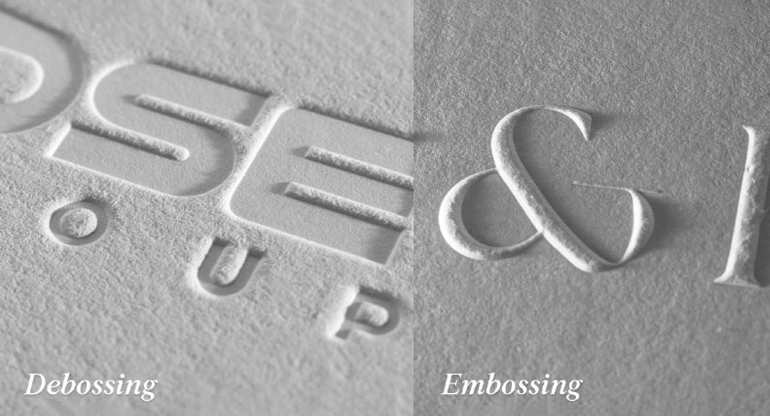
When deciding between embossing or debossing, it’s important to consider the look and feel you want. Embossing adds a noticeable, tactile element, making designs stand out from the packaging surface.
It’s ideal for bold, eye-catching packaging that makes a statement. Paper embossing is also popular in greeting cards, luxury tags, and certificates, as it creates a visually appealing look.
On the other hand, debossing is often preferred for a more subtle aesthetic, ideal for creating clean, modern packaging that communicates elegance and sophistication.
Both techniques can be used together, enhancing different elements within the same design.
Applications Of Embossing And Debossing In Packaging
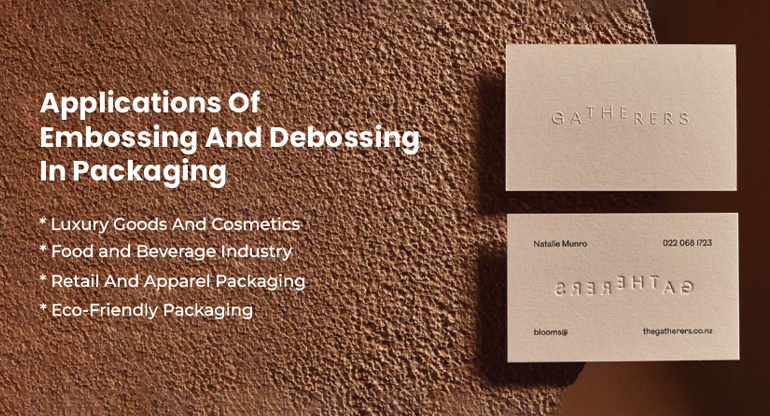
These are used in various industries. Let’s discuss them:
Luxury Goods And Cosmetics
Luxury brands often use embossing and debossing to create a premium look for their products. Embossed packaging for perfume boxes, for example, not only highlights the brand but also adds a layer of class and exclusivity to the product.
Many cosmetic packaging brands also prefer debossed logos on box packaging to maintain a minimalist yet elegant appearance.
Food and Beverage Industry
In the food industry, embossing is a popular choice for high-end chocolates and wine labels.
An embossed logo or pattern on the box of chocolates or a wine bottle packaging labels enhances the product’s luxury feel and makes it memorable for customers.
Retail And Apparel Packaging
Many apparel brands use embossed or debossed packaging for their boxes and tags.
Adding depth to the brand name or logo on a paper embossing or debossed tag creates a sophisticated brand identity.
This subtle detail can make a significant impact on the customer’s perception of the brand.
Eco-Friendly Packaging
Sustainability is a growing trend in packaging, and embossing and debossing offer environmentally friendly options because they don’t require additional inks or dyes.
Eco-conscious brands can use debossed designs on recyclable materials to maintain a minimal environmental impact while adding a high-end touch.
The Process Of Embossing And Debossing
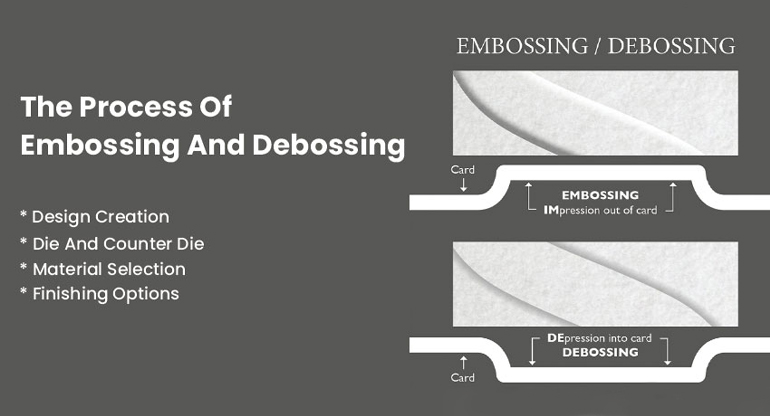
Both embossing and debossing require specialized equipment and expertise:
Design Creation
The design for embossing or debossing is typically created in a digital format, which is used to create a metal die.
Die And Counter Die
For embossing, a metal die is pressed into the material from the bottom, while a counter die presses from the top, resulting in a raised surface. For debossing, the process is reversed, creating an indentation.
Material Selection
The type of material affects the final result. Thicker materials like cardboard can hold embossing and debossing well, creating a bold effect.
Finishing Options
Embossing can be combined with other techniques, such as spot UV coating or foil stamping, to enhance certain areas and increase visual appeal.
Benefits Of Embossing And Debossing
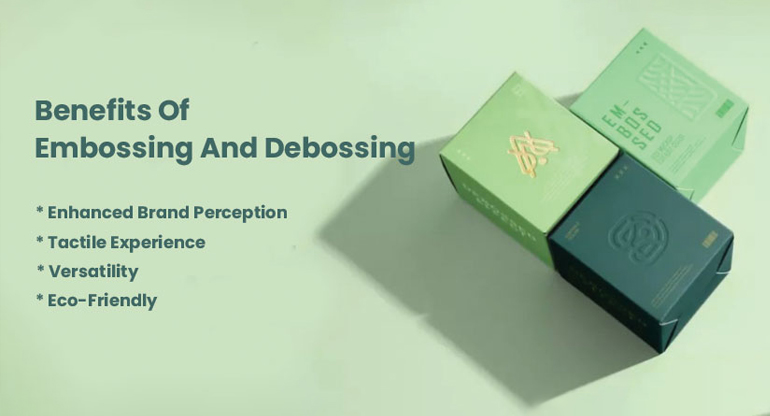
They offer numerous benefits. These are discussed below:
Enhanced Brand Perception
Both embossing and debossing communicate quality and attention to detail. It enhances the perceived value of a product.
Tactile Experience
Adding texture to packaging creates a sensory experience for customers, making the product memorable.
Versatility
These techniques are suitable for a range of industries, from fashion to food boxes to cosmetics.
Eco-Friendly
As these techniques don’t require additional dyes, they can be an eco-friendly option, especially when used on recyclable materials.
Wrapping Up:
Embossing and debossing are timeless techniques that enhance packaging with elegance and sophistication, allowing brands to create memorable, tactile experiences for customers.At Your Box Packaging, we specialize in creating custom packaging solutions that reflect your brand's unique identity. With a commitment to quality, innovative design options, and expert guidance, we help bring your vision to life.Partner with us to elevate your packaging and make a lasting impression on your customers. So, without any further ado! Contact us today via email at sales@yourboxpackaging.com to become the leading brand in your industry.
